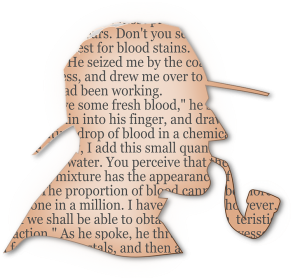 I like to fancy myself as a bit of Supplement Sleuth! I love working with herbs, nutrients and nutraceuticals but I am not blinded to the fact that manufacturers and suppliers, whatever their form of medicine, are large competitive businesses that ultimately need to sell product and want to sell more. Often practitioners & patients are surprised when I say things like, ‘It’s vitamin C not something sophisticated – go buy something cheap as long as it ticks these boxes…”. In contrast, there are some nutrients and nutraceuticals at the other end of the spectrum, that evoke my compete attention around form, delivery method etc. and I would never send my patient out the door to get these anywhere else.
I like to fancy myself as a bit of Supplement Sleuth! I love working with herbs, nutrients and nutraceuticals but I am not blinded to the fact that manufacturers and suppliers, whatever their form of medicine, are large competitive businesses that ultimately need to sell product and want to sell more. Often practitioners & patients are surprised when I say things like, ‘It’s vitamin C not something sophisticated – go buy something cheap as long as it ticks these boxes…”. In contrast, there are some nutrients and nutraceuticals at the other end of the spectrum, that evoke my compete attention around form, delivery method etc. and I would never send my patient out the door to get these anywhere else.
A few times recently, I’ve been asked by praccies, ‘What’s the deal with CoQ10 and ubiquinol V ubiquinone/ubidecarenone forms?’ and I can hear in their tone that they posses a healthy scepticism when being sold the latest and greatest supplement! ‘Should all my patients be using the ubiquinol form or just some?’, ‘Is it really worth the premium price?’. Great questions all of them 🙂
Just like we have come a long way with our understanding about turmeric bioavailability and the R&D parallel to this, the science of supplemental CoQ10 has progressed in leaps and bounds. (I’ve attached a >100 page collection of amazing studies on CoQ10 just to illustrate this point!) Thinking back, CoQ10 was a late 90s child, meaning it hit the Australian markets in 1999 with much fanfare and promise and then, as is often the case with first generation nutraceuticals, there was some anti-climax when it failed to deliver as the promised panacea. We now know why. The original form of these supplements was powdered ubidecarenone/ ubiquinone-10 which of course is the fully oxidised form. This has also been the dominant form used in clinical trials up until recently, which also explained why many of these RCTs failed to impress. However, when new research emerged suggesting a substantial difference in bioavailability & efficacy based on not only whether the supplement is in an oxidised (ubidecarenone/ ubiquinone) or reduced form (ubiquinol) but also on the physical preparation of the product in terms of powder V liquids etc. a big missing piece of the CoQ10 puzzle emerged!
CoQ10 can be a great inclusion in our prescriptions for CVD, statin use, mitochondrial dysfunction & fertility and it is never cheap but should we continue using old forms when the reduced liquid preps have been shown to offer such advantages? We also have a better understanding of what therapeutic doses really need to translate to in terms of patient plasma levels – so there’s less guesswork all round.
If, like me, you need to use CoQ10 in patients with these serious pathology pictures, then you probably need to update your knowledge around CoQ10 generally and specifically best supplement forms. The latest Update in Under 30 recording brings all this info together for a timely review…or you can read the 100+page article collage we’ve provided a link to as a good starting place.
Do you get overwhelmed by all the marketing spin out there when it comes to nutritional supplements? Rachel is a supplement sleuth, and loves nothing more than breaking through marketing babble get to the truth about supplements – their real strengths, niches, weaknesses, contraindications, therapeutic doses and best forms. Sort through the hogwash and find out the real information here.
